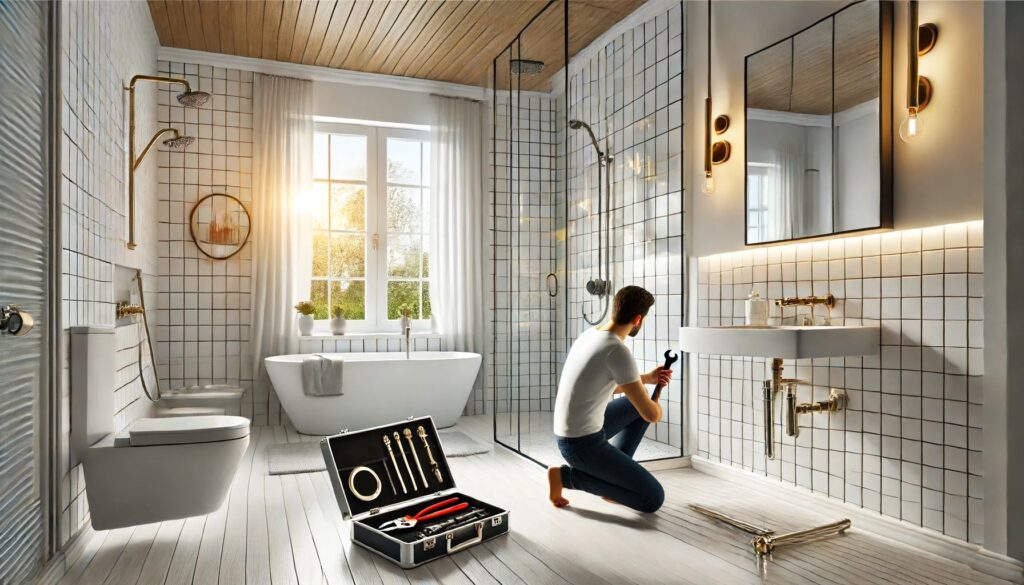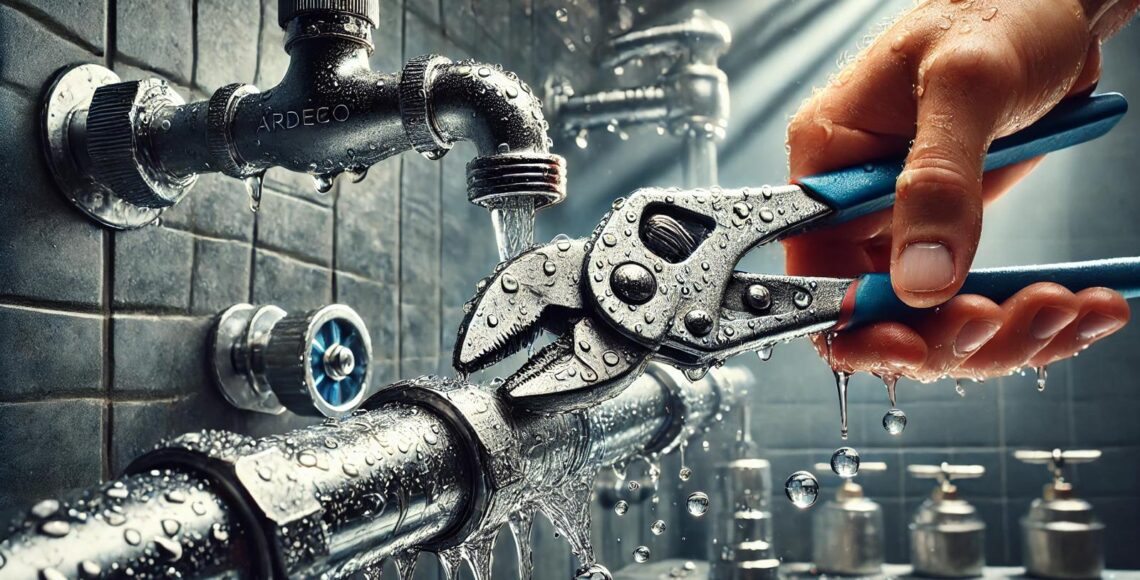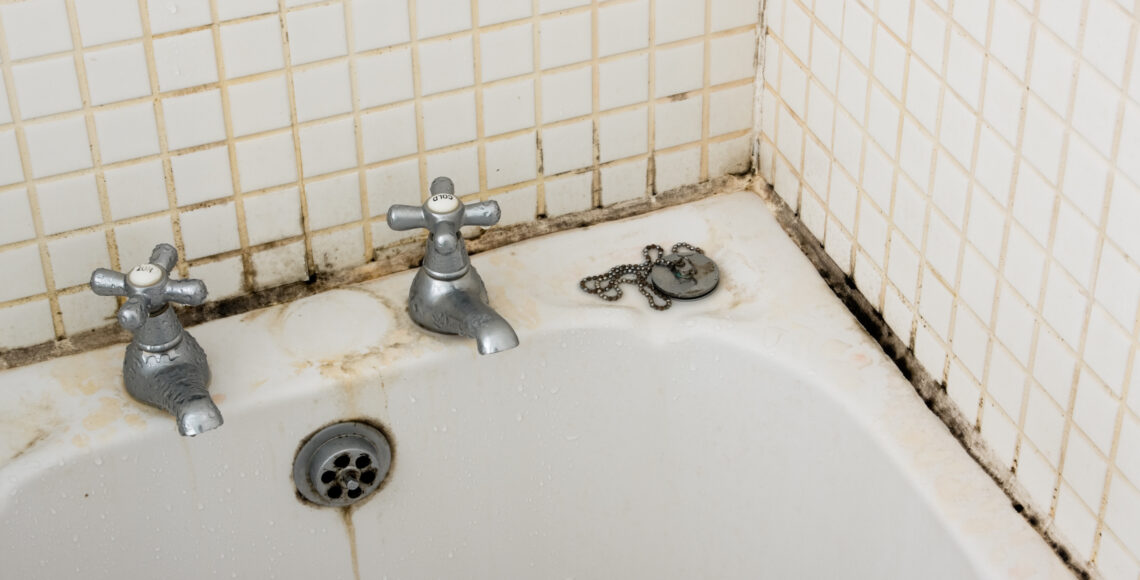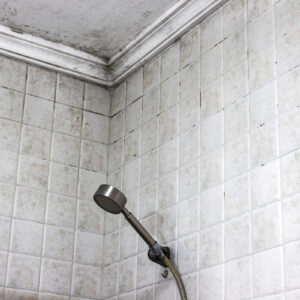How to Maintain Your Bathroom After a Renovation
Renovating your bathroom can be an exciting and rewarding project, transforming a functional space into a luxurious retreat. However, the key to enjoying your new bathroom for years to come lies in proper maintenance. This comprehensive guide will provide you with essential tips and tricks on how to maintain your bathroom after a renovation, ensuring that it remains in pristine condition.
Regular Cleaning Routine

The first step in maintaining your renovated bathroom is establishing a regular cleaning routine. Regular cleaning prevents the buildup of dirt, grime, and mildew, which can damage surfaces and fixtures over time.
Daily Cleaning:
- Wipe down countertops, sinks, and faucets to prevent water spots and soap scum buildup.
- Squeegee shower walls and doors after each use to minimize water stains and mold growth.
Weekly Cleaning:
- Scrub the toilet, shower, and bathtub with appropriate cleaners.
- Clean mirrors and glass surfaces with a non-abrasive glass cleaner.
- Mop the floor to remove dust and dirt.
Monthly Cleaning:
- Deep clean grout lines with a grout cleaner or a mixture of baking soda and water.
- Check and clean ventilation fans to ensure proper airflow and reduce moisture buildup.
Ventilation
Proper ventilation is crucial for maintaining a bathroom. Excess moisture can lead to mold and mildew, which can damage surfaces and affect indoor air quality. Ensure that your bathroom is well-ventilated by:
- Using Exhaust Fans: Install a high-quality exhaust fan and use it during and after showers to remove excess moisture.
- Opening Windows: If your bathroom has windows, open them to allow fresh air to circulate and reduce humidity levels.
- Door Gaps: Ensure there is a gap under the bathroom door to allow air to flow freely.
Preventing Mold and Mildew
Mold and mildew can be persistent problems in bathrooms due to the constant presence of moisture. Here are some tips to prevent their growth:
- Seal Grout and Tiles: After your renovation, ensure that grout lines and tiles are properly sealed to prevent water penetration.
- Use Mold-Resistant Products: Opt for mold-resistant paint and caulk in your bathroom.
- Keep Surfaces Dry: Wipe down wet surfaces and fix any leaks promptly to prevent mold from taking hold.
Maintaining Fixtures

Your bathroom fixtures, such as faucets, showerheads, and toilets, require regular maintenance to function correctly and look their best.
- Faucets and Showerheads:
- Clean aerators and showerheads regularly to remove mineral deposits.
- Check for leaks and replace worn-out washers or cartridges.
- Toilets:
- Clean the toilet bowl regularly with a toilet cleaner.
- Inspect the toilet’s flushing mechanism and replace any faulty parts.
Caring for Flooring and Surfaces

Different types of bathroom flooring and surfaces require specific care to maintain their appearance and longevity.
- Tile Flooring:
- Clean tiles with a mild detergent and water.
- Regularly seal grout lines to protect against stains and moisture.
- Vinyl and Laminate Flooring:
- Sweep or vacuum regularly to remove dirt and debris.
- Use a damp mop with a mild cleaner suitable for vinyl or laminate.
- Natural Stone Surfaces:
- Clean stone surfaces with a pH-neutral cleaner to avoid damage.
- Seal stone countertops and floors periodically to protect against stains.
Plumbing Maintenance

Proper plumbing maintenance is essential to prevent leaks and water damage in your renovated bathroom.
- Inspect for Leaks: Regularly check under sinks and around toilets for signs of leaks.
- Clean Drains: Use a drain cleaner or a mixture of baking soda and vinegar to keep drains clear and prevent clogs.
- Water Heater Maintenance: Ensure your water heater is functioning correctly and set to an appropriate temperature to avoid scalding.
Maintaining the Aesthetic
To keep your bathroom looking as good as new, pay attention to the small details that contribute to its overall aesthetic.
- Replace Caulk and Sealant: Over time, caulk and sealant can degrade and discolor. Replace them as needed to maintain a clean appearance.
- Polish Fixtures: Regularly polish chrome and stainless steel fixtures to keep them shiny and free of water spots.
- Refresh Paint: Touch up any chipped or faded paint to keep walls looking fresh.
Energy Efficiency
Maintaining an energy-efficient bathroom not only helps the environment but also reduces utility bills.
- Install Low-Flow Fixtures: Consider replacing old fixtures with low-flow options to conserve water.
- LED Lighting: Use LED bulbs for energy-efficient and long-lasting lighting.
- Insulate Pipes: Insulate hot water pipes to reduce heat loss and improve energy efficiency.
Regular Inspections
Conducting regular inspections of your bathroom can help identify potential issues before they become significant problems.
- Check for Damage: Look for signs of water damage, mold, and wear and tear on surfaces and fixtures.
- Test Safety Features: Ensure that safety features like grab bars and non-slip mats are securely in place and functioning correctly.
Professional Maintenance
Finally, consider scheduling professional maintenance for your bathroom at least once a year. A professional plumber or contractor can perform a thorough inspection and address any issues that may not be visible to the untrained eye.
Conclusion
Maintaining your bathroom after a renovation involves regular cleaning, proper ventilation, and routine inspections. By following these tips and incorporating preventive measures, you can ensure that your renovated bathroom remains a beautiful and functional space for years to come. Investing time and effort in maintenance will protect your investment and enhance your bathroom’s longevity and aesthetic appeal.








